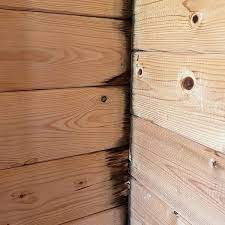
Mold prevention and removal action is critical. Mold can cause structural problems and mild to severe health issues. It is a major factor in the rebuilding process after water damage has occurred.
You will need to act quickly to prevent mold growth after water damage, the first 48 hours are critical. Start by removing standing water. Use pumps, wet/dry vacuums, or buckets to remove any standing water from affected areas. Pay special attention to hidden areas like basements or crawl spaces. Then it’s time to begin drying the affected area. Ventilation is key, open windows and doors to allow air circulation. Use fans to increase airflow. The use of dehumidifiers will aid to quickly remove excess moisture from the air, especially in humid climates or poorly ventilated areas. Another helpful drying tool is the use of space heaters (or the home furnace, if able) especially in cooler months. Remove water damaged material, like drywall, insulation, and carpets. For log homes, you’ll need to be sure and thoroughly dry any logs that have absorbed water. You may also need to sand down any areas that have been damaged by the water to prevent mold growth. Once all areas have been dried, you will need to clean and disinfect them. A good solution for this process is 1 cup of bleach to 1 gallon of water on non-porous surfaces to kill any remaining mold spores. Be careful not to use too much water, which can contribute to further moisture problems. Conduct a final inspection of the area to confirm all water damaged areas have been dried and cleaned.
In the situation where water has been present for extended periods, review the below step-by-step guide on how to remove mold after water damage and prevent it from growing:
Removing Mold After It Appears
1. Wear Protective Gear
- Use an N95 mask, gloves, and goggles to protect yourself from inhaling mold spores during the removal process.
- Isolate the Area
- Close off the area where mold is present to prevent spores from spreading to other parts of the home. Use plastic sheeting and tape to seal off doorways and vents.
- Remove Moldy Materials
- For porous materials like drywall, insulation, or carpet, it’s best to completely remove and discard them, as mold can penetrate deeply into these materials.
- For non-porous surfaces like metal, glass, or tile, wood (if fully dried and no water damage is present), you can scrub the mold off with a cleaning solution.
- Scrub Moldy Surfaces
- On wooden surfaces or walls, scrub mold off with a stiff brush and a cleaning solution of water and detergent or a bleach solution (1 cup bleach per 1 gallon of water). Don’t oversaturate the area, as excess moisture can lead to further mold growth. Allow the cleaned area to dry thoroughly after scrubbing.
- HEPA Vacuuming
- After cleaning, use a HEPA vacuum to remove any remaining mold spores from the affected area and surrounding surfaces.
- Dispose of Contaminated Materials Safely
- Seal and dispose of any mold-contaminated materials like drywall, carpeting, or insulation in heavy-duty plastic bags to prevent spores from spreading.
- Treat with Antimicrobial Solutions
- After cleaning, apply an antimicrobial treatment or mold-preventative solution to treated areas to kill any remaining spores and prevent regrowth.
Professional Mold Remediation
If the mold infestation is extensive (covering more than 10 square feet), or if mold is present in hard-to-reach places like inside walls or under floors, you should consider hiring a professional mold remediation specialist. They can:
- Conduct a thorough inspection.
- Use industrial-grade drying equipment, air scrubbers, and mold treatments.
- Remove mold in difficult areas without spreading spores.
Preventing Future Mold Growth
- Control Moisture Levels
- Use dehumidifiers in high-humidity areas like basements or bathrooms.
- Ensure good ventilation in areas prone to moisture, such as kitchens and bathrooms. Use exhaust fans when cooking or showering.
- Regular Inspections
- Regularly check for leaks in the roof, windows, and plumbing. Look for signs of moisture or water damage, especially after storms.
- Inspect your log home’s logs and walls for signs of water infiltration or rot.
- Proper Drainage
- Ensure that your home’s gutters and downspouts direct water away from the foundation to prevent moisture buildup around the logs.
- Grade the soil around your home so that it slopes away from the foundation to prevent water pooling.
4. Seal and Protect Wood
- Apply log sealants and finishes that protect against water infiltration and UV damage. Confirm all chinking and caulking areas are intact and without leaks. Regular maintenance of the exterior logs will help keep moisture out.
By acting quickly after water damage and taking preventative measures, you can effectively prevent and remove mold from your log home, keeping it safe and healthy. If your home has experienced log damage and needs replacement, call the team at 888 Log Guys, we have replaced thousands of feet of damaged logs.








